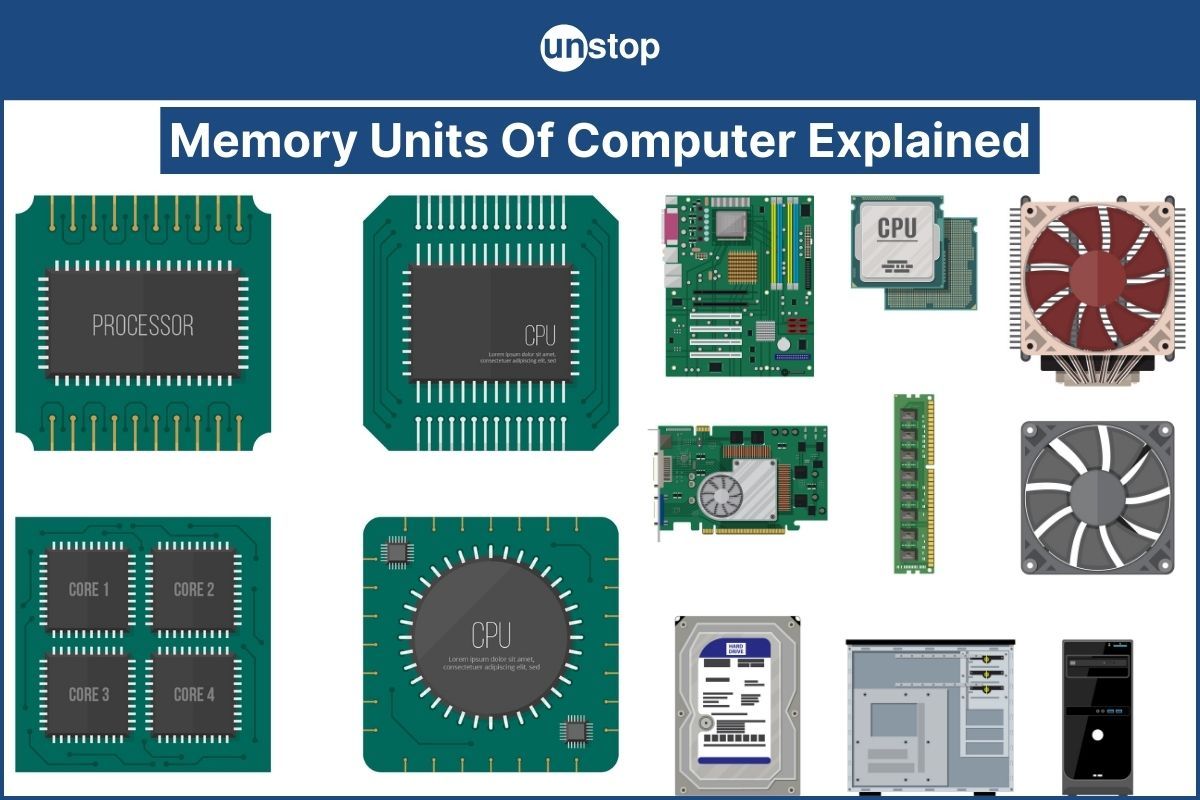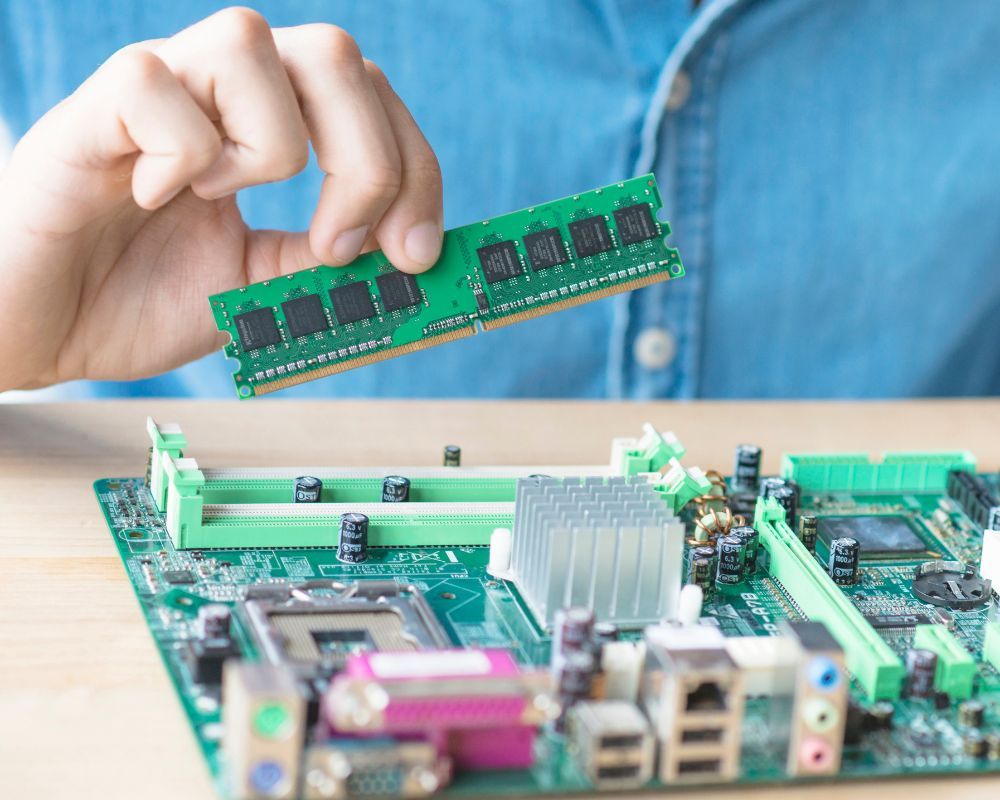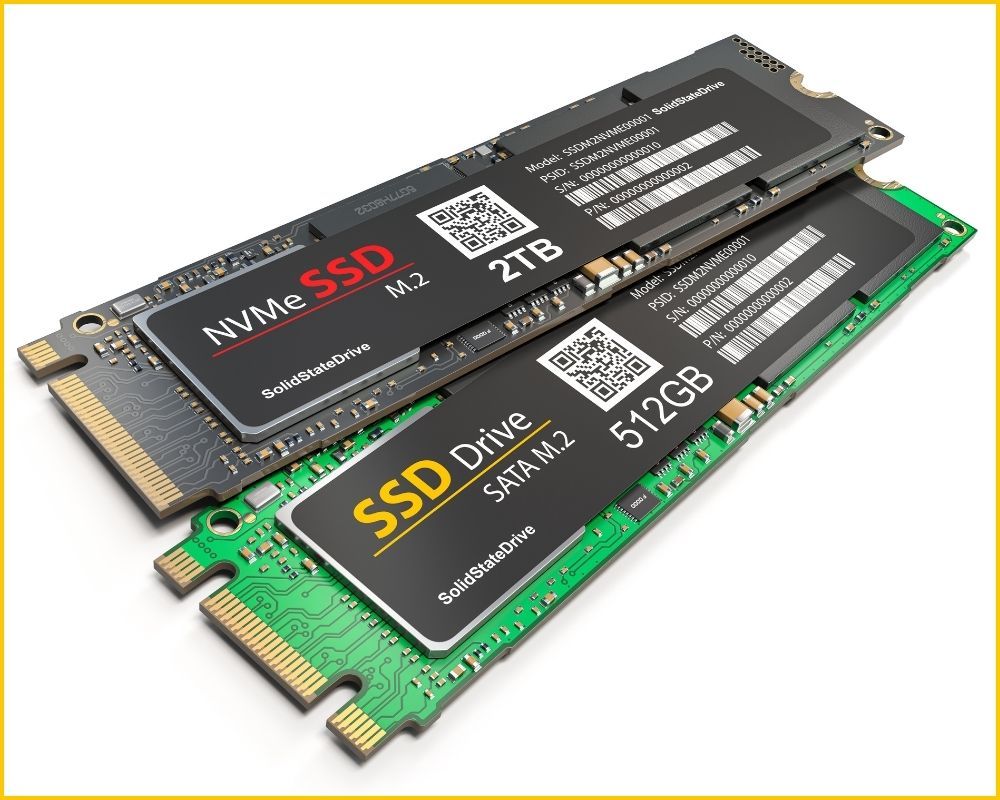- Understanding Memory Units
- Overview Of Memory Units In Computers
- Functions Of Memory Units In CPU
- Differentiating Between Memory & Storage
- Primary & Secondary Memory
- Role Of Memory Units In Computing
- Measuring Unit Of Memory
- Bit & Its Significance In Memory Units
- Frequently Asked Questions (FAQs)
- Master Your Skills: Quiz Time
Memory Units: Types, Role & Measurement Of Computer Memory Units

Memory units play a crucial role in storing and retrieving data on electronic devices. Understanding how memory units function is essential for optimizing device performance and storage capacity.
Whether you are a tech enthusiast or simply curious about how your devices store information, this guide will provide valuable insights into the workings of memory units.
Understanding Memory Units
To begin with, let us understand what exactly memory units are:
Importance Of Memory Units
Without memory units, computers would not be able to function effectively. For instance, when you open a document on your computer, the information is temporarily stored in the memory unit for quick access while you work on it.
When a computer runs multiple programs simultaneously, each program requires space in the memory unit to store its data temporarily. This allows users to switch between applications seamlessly without losing progress or information.
Types Of Memory Units
There are different types of memory units, such as Random Access Memory (RAM) and Read-Only Memory (ROM). RAM provides temporary storage that can be read from and written to by the computer processor.

On the other hand, ROM stores firmware that cannot be easily modified or overwritten by normal computer processes.
-
RAM offers fast data access for running applications.
-
ROM retains critical system instructions even when the power is off.
Overview Of Memory Units In Computers
Let us study the overview of memory units in computers:
Types And Sizes
Memory units in computers, such as RAM and ROM, vary in type and size. For instance, RAM can range from a few megabytes to several gigabytes, depending on the computer's specifications. On the other hand, ROM typically stores essential instructions for booting up the system.
These memory components hold information temporarily or permanently based on their type - whether it's for immediate processing (like with RAM) or storing critical system instructions (as seen with ROM).
Role In Computer Performance
The performance of a computer system heavily relies on the efficiency of its memory units. When running multiple programs simultaneously or accessing large files, having sufficient RAM ensures smooth operations without slowdowns or crashes.
ROM provides stability by holding vital system information even when the computer is powered off.
Functions Of Memory Units In CPU
Let us study the functions of memory units in the CPU:
Temporary Storage
Memory units in a CPU act as temporary storage for data during processing. They hold instructions and data required by the CPU.
Memory units enable quick access to essential information needed by the CPU to perform tasks efficiently. Without them, the processor would have to wait longer for data retrieval.
Impact On Efficiency
The speed and capacity of memory units directly influence how quickly and effectively the CPU can process information. Faster memory units lead to improved performance.
Differentiating Between Memory & Storage
Let us now study the difference between memory and storage:
Memory Vs. Storage
Memory units provide temporary storage for data during active tasks. Memory allows quick access to information needed by the CPU to perform operations efficiently. It is like a workspace where the CPU can quickly retrieve and store data.
In contrast, storage systems, such as hard drives or solid-state drives, serve as long-term repositories for data even when the computer is turned off. They retain files, programs, and other information that need to be accessed at a later time.
Role Of Memory Vs. Storage
Memory and storage are both essential for a computer to work well. Memory helps access data quickly when needed, while storage keeps a lot of information for later use.
Think of memory as your desk space where you work on immediate tasks and storage as your filing cabinet where you keep documents for long-term reference.
Primary & Secondary Memory
Let us study the primary and secondary memory in detail:
Primary Memory
Primary memory, also known as RAM, is crucial for providing quick access to data while actively using a computer. It helps in running applications and programs efficiently by storing temporary information needed for immediate tasks.
Computers use primary memory to store data that needs to be accessed quickly during operations. This type of memory is volatile, meaning it loses its content when the power is turned off. Therefore, it cannot retain information permanently as secondary memory does.
For example, when you open a web browser, the data required for that specific task is stored in primary memory.
Secondary Memory
Storage devices in a computer known as secondary memory are utilized for permanently storing data, ensuring that information is retained even when the computer is not powered on. This form of memory, referred to as non-volatile, means that data remains unchanged even in the absence of electricity.
Secondary memory is important for saving a lot of data that doesn't fit in the computer's RAM. It lets users store files, programs, and other info for later use. Unlike primary memory (RAM), which is volatile and temporary, secondary memory provides a way to store data for future retrieval and use.

Examples of secondary memory include hard disk drives (HDDs), solid-state drives (SSDs), USB flash drives, and optical discs like CDs and DVDs.
Role Of Memory Units In Computing
Let us study the role of memory units in computing:
Faster Data Access
Memory units play a vital role in computing, offering quicker data access than storage devices. When the CPU needs to retrieve information, it accesses it from memory units instead of slower storage options like hard drives.
By storing frequently accessed data in memory units, computers can respond more rapidly to user commands and tasks. This swift retrieval process enhances the overall speed and efficiency of the computer system.
Enhanced System Speed
In a computer system, memory units are like workbenches where the CPU quickly grabs necessary tools (data) to complete tasks efficiently. With multiples of faster-access memory available, operations such as opening programs or browsing websites become almost instantaneous.
The role of memory units cannot be overstated; they significantly contribute to the seamless and responsive experience users expect from modern computing devices.
Measuring Unit Of Memory
In computers, memory is measured in units such as bytes, kilobytes, megabytes, gigabytes, terabytes, and so on. A byte is typically made up of 8 bits. Kilobytes (KB) represent 1,024 bytes, megabytes (MB) represent 1,024 kilobytes, gigabytes (GB) represent 1,024 megabytes, and so on.
This hierarchical system allows for measuring memory capacity in computers, with larger units representing greater amounts of data that can be stored and processed.
Units Of Computer Memory Measurement
Units of computer memory measurement are used to quantify the amount of data that can be stored or processed by a computer system. The basic units include bits, bytes, kilobytes, megabytes, gigabytes, terabytes, petabytes, exabytes, and even zettabytes.
Bit: Bit is the smallest storage unit for data, showing either a 0 or 1 in binary form.
Byte: Comprised of 8 bits, a byte is the fundamental unit to measure computer memory.
Kilobyte (KB): Equal to 1,024 bytes, often used to quantify small files.
Megabyte (MB): Approximately 1 million bytes, commonly used for file sizes and storage capacity.
Gigabyte (GB): Roughly 1 billion bytes, frequently used to measure hard drive and RAM sizes.
Terabyte (TB): Equivalent to about 1 trillion bytes, often seen in large-scale storage devices.
Petabyte (PB): Around 1 quadrillion bytes are utilized in massive data centres and cloud storage.
Exabyte (EB): Equal to 1 quintillion bytes, typically found in enterprise-level storage solutions.
Zettabyte (ZB): Representing 1 sextillion bytes, this unit is crucial for measuring vast amounts of data in the modern digital age.
Understanding these units of computer memory measurement is essential for effectively managing and optimizing storage resources in various computing environments.
Bit & Its Significance In Memory Units
Let us study the smallest unit of memory units:
Bit
A bit is the smallest unit in memory units, representing a binary digit, either 0 or 1. These bits are fundamental components used to store and transmit information across various devices. They serve as the building blocks for all digital data representation and processing, forming the basis of computing systems worldwide.
Bits play a crucial role in computer operations by encoding data into binary form, allowing machines to interpret and manipulate information effectively.
For instance, when you save a file on your computer, it is ultimately stored as a series of bits, with each bit representing either an "on" (1) or "off" (0) state. This binary system enables computers to perform complex calculations and execute tasks efficiently.
Forming Larger Units
Bits combine to create more significant memory units like bytes, kilobytes, and beyond. Understanding how bits come together is crucial as it impacts the amount of information a device can store or process.
Representing Values
The range of values that can be stored and processed by a memory unit depends on the number of bits it contains. Having more bits means the memory unit can handle a wider variety of values.
For instance, an 8-bit memory unit can represent up to 256 different values.
To enhance your knowledge of computer fundamentals, here is a must-read article for you- Computer Fundamentals | Evolution, Components & Operating Systems.
Conclusion
In conclusion, the exploration of memory units in computing shed light on their crucial role in processing and storing data. Understanding the distinctions between various memory types, from primary to secondary memory, is fundamental for grasping the intricate workings of computer systems.
Frequently Asked Questions (FAQs)
1. What is the significance of bits in memory units?
Bits are fundamental units representing data in computing. They consist of binary digits (0 or 1) and form the basis for digital information storage and processing within memory units.
2. How do primary and secondary memory differ?
Primary memory, like RAM, stores data temporarily for quick access by the CPU. Secondary memory, such as hard drives, retains data permanently even when the system is powered off.
3. Why are types of bytes and SI prefixes important in understanding memory units?
Bytes represent a unit of digital information storage. Knowledge of SI prefixes like kilo, mega, and giga helps quantify data sizes effectively within computer systems.
4. What role do memory units play in computing processes?
Memory units store instructions and data temporarily during computation tasks. They facilitate high-speed access to information required by the CPU to execute programs efficiently.
5. Can you explain the difference between memory and storage?
Memory refers to temporary data storage used during active processes on a computer. Storage encompasses the long-term retention of files even when not actively processed by the system.
Master Your Skills: Quiz Time
Suggested reads:
- Hybrid Topology In Computer Network | Advantages & Disadvantages
- Tree Topology | Advantages & Disadvantages In Computer Network
- Ring Topology | Basic Concept And Its Advantages & Disadvantages
- Mesh Topology | Characteristics, Benefits And Types Explained
- Generations Of Computer | 1st, 2nd, 3rd, 4th & 5th Generations
Instinctively, I fall for nature, music, humor, reading, writing, listening, traveling, observing, learning, unlearning, friendship, exercise, etc., all these from the cradle to the grave- that's ME! It's my irrefutable belief in the uniqueness of all. I'll vehemently defend your right to be your best while I expect the same from you!
Login to continue reading
And access exclusive content, personalized recommendations, and career-boosting opportunities.
Subscribe
to our newsletter
















Comments
Add comment